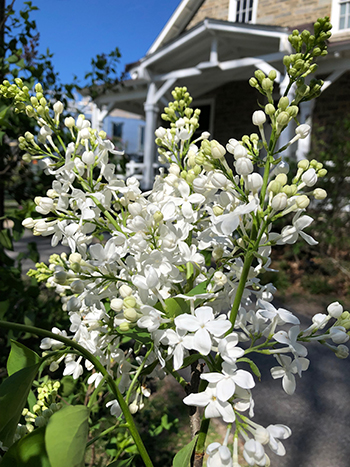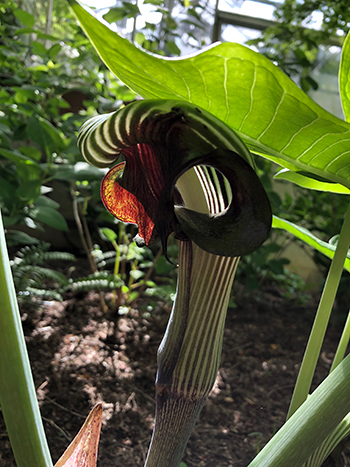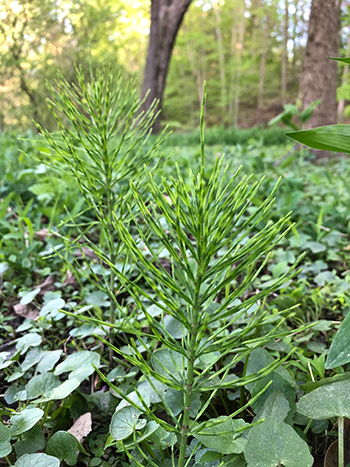
Plants of the Week: April 22

What does spring smell like? For me it’s the scent of lilacs in full bloom. This deciduous shrub conjures memories of warm afternoons playing in my grandparents front yard. The Lilac Collection is in full bloom. Adjacent to the Cherry Border, the lilacs were one of the earliest collections at the Scott Arboretum. Near the Swarthmore Friends Meetinghouse is Syringa ‘Betsy Ross’. This white blooming cultivar is noted for its fragrant, pure white flowers, rounded growth habit, and resistance to powdery mildew. The cultivar is also a good performer for southern gardens. Photo credit: J. Coceano

Bizarre is an understatement as Arisaema ringens emerges from its winter slumber. Horn-like new growth gives way to two glossy green trifoliate leaves, with each leaf having three ovate to elliptic leaflets. Each flower consists of a green and purple striped spathe with a hood that covers the inner yellow-to-white flower spike known as the spadix. Unfortunately, the flower is hidden beneath the foliage and is easy to miss. The cobra lily is a tuberous woodland perennial native to Japan. It is closely related to the eastern North American native Jack-in-the-pulpit, Arisaema triphyllum. Photo credit: J. Coceano

The annual Crum Creek Cleanup Day was held on April 23. While activities centered around trash pickup and restoration planting, the Crum Woods was bursting with new growth. Podophyllum peltatum, our native mayapple, and Asimina triloba, pawpaw, were in full bloom.
One unexpected find was a small patch of Equisetum hyemale. Often referred to as rough horsetail or scouring rush, Equisetum is a non-flowering, rush-like, rhizomatous native to North America and Eurasia.
Equisetum is categorized as a fern ally in large part because they, like the ferns, are non-flowering, seedless plants which reproduce by spores. Several sources note the plants’ aggressive tendency to spread in a garden setting. Equisetum is found in low-lying areas of the Crum Woods and has numerous encroaching neighbors which compete for space and resources. This is likely why its aggressive tendencies haven’t been observed. Photo credit: J. Coceano





Roz
Posted at 18:55h, 25 AprilHi, I have a question about the ground cover plant beneath the Equisetum in the last photo. Can you tell me what it is? Does it have a yellow flower? A friend found a patch in her yard and she’s not sure what it is and if it’s an invasive or a keeper. Thanks for any advice! –rmh
Becky Robert
Posted at 08:31h, 30 AprilDear RMH,
The plant is lesser celandine, Ficaria verna, a nasty invasive. It does have a lovely yellow flower this time of year. The bulb needs to be disposed of in the trash because it will not break down in your compost pile.
I hope this helps.
Sincerely,
Becky Robert
Scott Arboretum